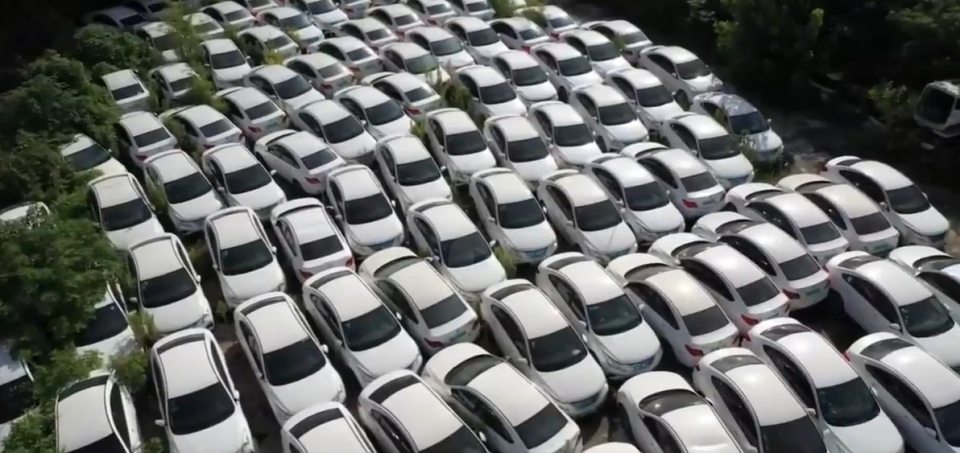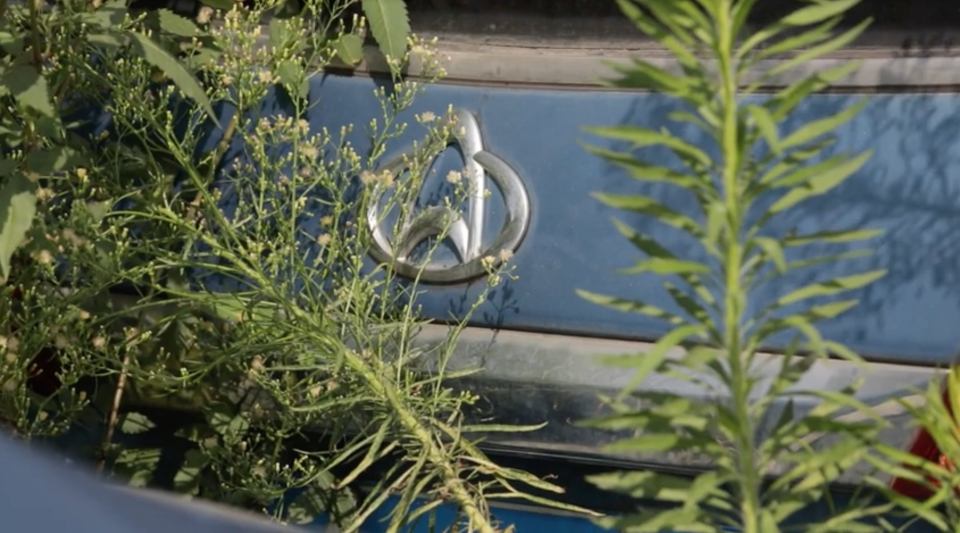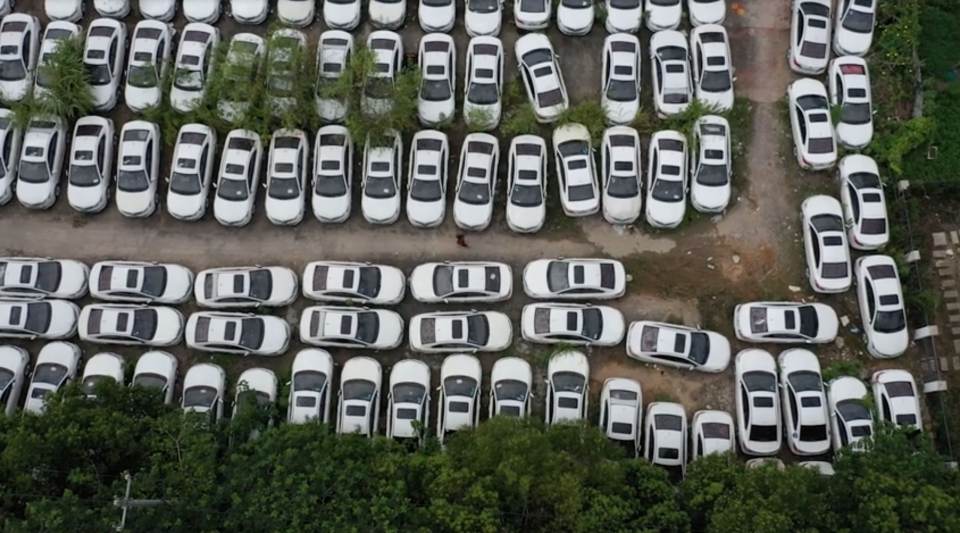HUNDREDS of electric cars have been left to rot in eerie graveyards that have been springing up across China.
Shocking footage has emerged showing endless rows of almost identical vehicles piling up in a field in the city of Hangzhou.
These "EV graveyards" have been seen on and off since around 2019 in at least half a dozen Chinese cities.
Some motors have sat there for so long that plants are sprouting from their trunks.
Others have been discarded in such a hurry that fluffy toys still sit on their dashboards.
But whether they are an old or new addition to the car cemetery, nearly all the vehicles are white - along with a few silver or light blue tones.
Read more on car graveyards
This is likely due to the fact that Chinese customers tend to choose lighter tones for electric vehicles, and because these are preferred colours for ride-sharing app cars.
But the failure of these shared riding companies might explain the astonishing number of abandoned vehicles.
There are now around 100 Chinese electric car makers, down from roughly 500 in 2019, reports.
Hundreds of ride-hailing companies were created in the past decade, taking advantage of government incentives.
Most read in Motors
But when those were slashed in 2019, plenty went under and had to ditch their fleet of vehicles.
The mass abandonment of the cars also came partly from the rapid rise of China’s EV industry.
As new and better models were quickly being rolled out from several manufacturers, existing vehicles soon became outdated.
Instead of selling the obsolete models into the second-hand market, it was easier and perhaps cheaper to just abandon them in an empty field.
Local media reports claim that the government of Hangzhou had vowed to dispose of the cars, which started to accumulate in 2019.
But more than 200 white cars were found carelessly parked in the same field, Bloomberg reported.
They were all manufactured by Chongqing Changan Automobile Co., and seemed to be operated by ride-hailing companies Didi Chuxing Technology Co. and Faststep Automobile Management.
All had blue plates, indicating they were made and registered before December 2017, when Hangzhou switched to green plates for new-energy vehicles.
Read More on The Sun
Registration stickers showed some would have been running on roads until as recently as 2021.
A similar situation happened to the country’s bike-sharing market in 2018, which resulted in hundreds of thousands of bicycles being abandoned across China.













